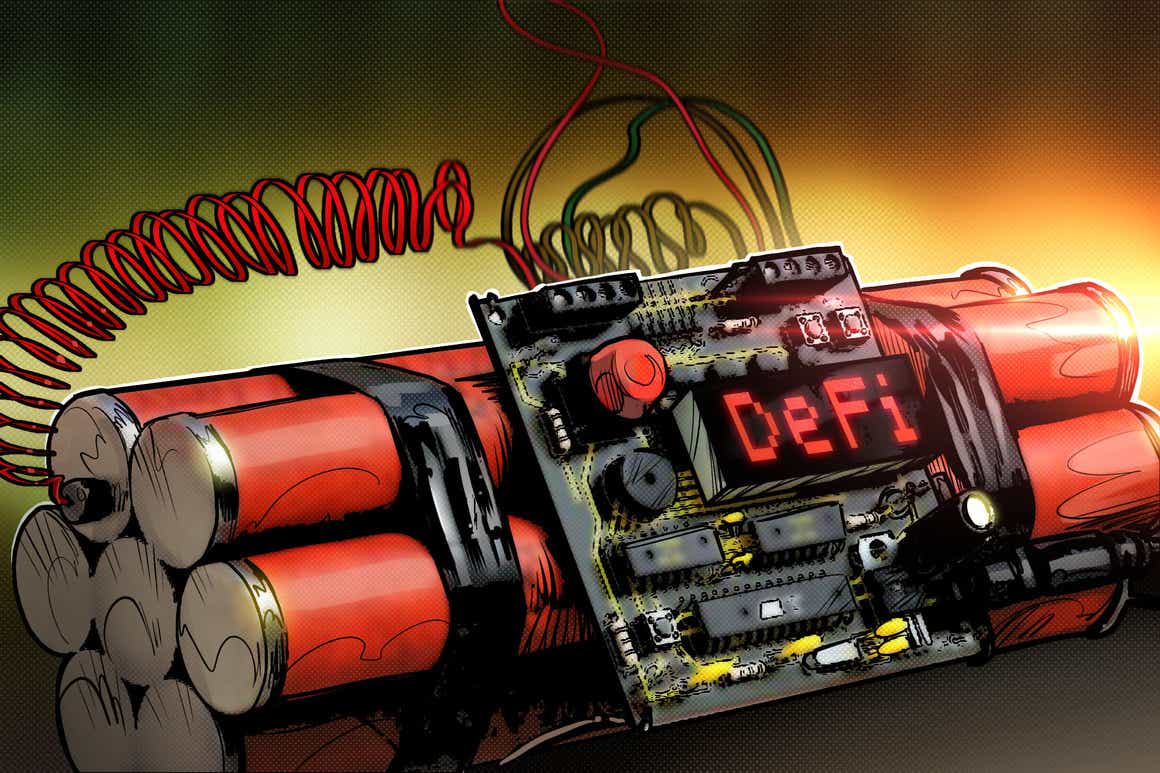As 2021 draws to a close, the premier lineup in the DeFi landscape largely consists of synthetic asset platforms (SAPs). An SAP is any platform tha
As 2021 draws to a close, the premier lineup in the DeFi landscape largely consists of synthetic asset platforms (SAPs). An SAP is any platform that enables users to mint synthetics, which are derivatives whose values are pegged to existing assets in real time. As long as oracles can supply a reliable price feed, synthetics can represent any asset in the world and take on its price — be it a stock, commodity or crypto asset.
As such, SAPs finally bridge the gap between emergent DeFi platforms and legacy finance, allowing investors to place their bets on any asset anywhere, and all from the cozy confines of their favorite blockchain ecosystem. Decentralized and operating on Ethereum’s layer one, SAPs would appear to be crypto’s next major growth catalyst. However, unlike for sound money and verifiable artwork, in the world of collateralized lending, decentralization and secure ownership only make up half the equation.
Collateralized debt
In traditional finance, instruments of collateralized debt are among the world’s most prominent financial assets, boasting a cumulative valuation of nearly $1 trillion. Most people know them as mortgages — a term whose etymology traces back to thirteenth-century France and which translates, literally, as “death pledge.” Perhaps morbid or melodramatic to the average individual, but to the many millions who lost their retirement accounts, life savings, homes and livelihoods in the aftermath of the 2008 financial crisis, the terms “death pledge” and “collateral damage” are not only appropriate but par for the course in conveying the anguish and agony that await those who partake in collateralized lending without first understanding the risks and ramifications that come with it.

Here’s the gut-wrencher: To receive a loan, a debtor puts forward collateral that becomes contractually locked with a creditor, who may seize the collateral in the event the debtor becomes unable to service the debt. Unfortunately, servicing collateralized debt is not as simple as making punctual interest payments, as the value of the underlying collateral may deviate drastically in response to volatility in the broader market — like the sudden collapse of the U.S. subprime housing sector. If the value of a debtor’s collateral falls below a predefined threshold, the creditor — be it a bulge-bracket bank or decentralized protocol — has the right to assume possession and liquidate the collateral at market value to recoup the outstanding loan principal. If the term death pledge is too much to stomach, you might well call it the rug pull of a lifetime.
Related: US debt ceiling crisis: A catalyst for crypto’s ultimate decoupling?
Whether issued on Wall Street or the Ethereum blockchain, the risks involved with collateralized financial products cannot be merely decentralized away. Liquidation triggers are fundamentally rooted in exposure to the volatility of a broader macroeconomic environment, which neither developers nor financiers can control.
MakerDAO’s lesson for DeFi space
Take MakerDAO, for example, an exceptionally decentralized SAP whose collateralized stablecoin DAI is pegged meticulously to the U.S. dollar. On the surface, Maker offered an enticing opportunity for investors, who could stake their otherwise dormant crypto holdings to mint a synthetic dollar. Stable though DAI may be, the distributed collateral pool that backs it is composed of some of the world’s most volatile assets — namely, Ether (ETH) and Bitcoin (BTC).
To prevent crypto market downturns from triggering mass liquidations, the Maker protocol requires over-collateralization to the tune of 150%. In other words, users only receive two-thirds of what they inject into the protocol in dollar terms, a model that neither appeals to traders nor supports adequate capital efficiency in the ecosystem. To add insult to injury, the ever-volatile crypto market proved Maker’s steep collateral requirements insufficient in March 2020, when a 70% drawdown liquidated Maker users across the board for losses totaling over $6 million.

Learning from Maker’s hardships, prominent SAPs have taken additional measures to prevent catastrophic mass liquidations on their platforms. Or, more accurately, they’ve taken more of the same measure: Mirror Protocol requires collateralization levels of up to 250%, and Synthetix demands an audacious 500% from users. Of course, over-collateralization of this magnitude is hardly sufficient to compete with traditional finance, where centralized brokerages provide better metrics hand-over-fist. But there’s another problem, too.
To crypto traders for whom exorbitant collateralization requirements and liquidation risks are unpalatable, it makes more sense to ditch SAPs altogether and purchase synthetic stocks and commodities in secondary markets. As a consequence of the shift in demand, significant pricing premiums now persist for many synthetics, thereby eroding the real-world parity…
cointelegraph.com
